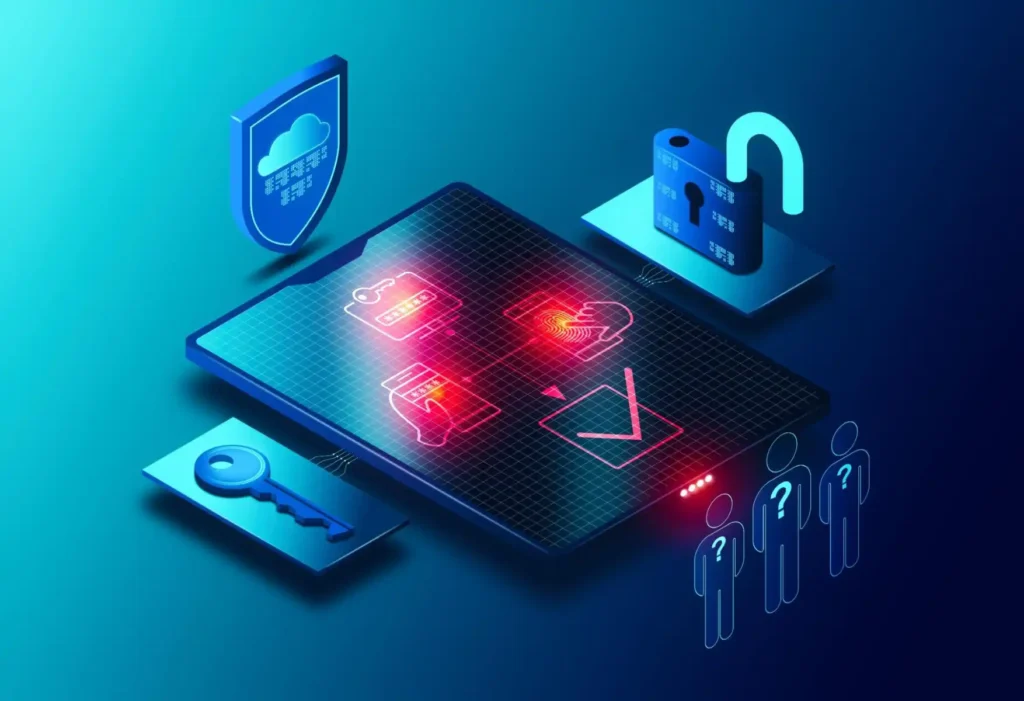Multi-factor authentication (MFA) is an important security measure that businesses use to protect everything from Microsoft Office apps to social media to corporate financial accounts.
However, the constant need to repeatedly perform MFA can sometimes lead to a phenomenon known as “MFA fatigue.”
We’ve all had those days where every single stop on your digital to-do list includes a prompt to check your text messages, type in a code from your phone, or validate your location, the list of MFA actions and apps goes on and on.
It can be tempting to just click the “Yes, it’s me” link without giving it much thought, but the risk of that lapse in attention to detail can be significant. This leads to hacked bank accounts, stolen customer identities, loss of business intellectual property, ransomware and more.
In this article, we will discuss what MFA fatigue is, how you can avoid it, and some helpful methods for preventing it.
Avoid the Perils of MFA Fatigue With a Proven IT PartnerImprove your digital defenses by mitigating MFA fatigue with Exigent Technologies. |
Multi-factor authentication involves verifying a user’s identity by using two or more methods, such as a password on a laptop or in an application and a secondary code sent to a mobile phone.
The process is constructed to provide an additional layer of security to protect applications and accounts from being accessed by unauthorized players.
While MFA is considered a more secure way to access valuable data and applications, the constant need to complete the additional steps is getting increasingly tiring, especially if users are required to take those steps over and over again, multiple times a day.
MFA fatigue is that sense of annoyance or frustration users feel as they are repeatedly required to prove their identity to access work applications, personal online services, and even private email accounts.
That annoyance easily spills over, causing users to become less vigilant and less likely to scrutinize MFA requests sent to their phones. That can compromise security.
Accelerating the impact of fatigue is a new vector of cyber attacks called MFA Bombing or MFA Spamming. This strategy bombards users with credential checks as attackers repeatedly push second-factor authentication requests to the user’s email, phone, or another registered device.
The goal is to simply overwhelm or confuse the victim into confirming their identity via notification, allowing for a breach to occur.
In today’s world of clever cybercriminals, it is important to reinforce the importance of MFA because your company’s cybersecurity stance is at stake with every request.
MFA is used to protect valuable assets such as your business customers’ personal and financial data and intellectual property.
The outcome of lax cybersecurity grows more dire each year, with the average cost of a data breach in the U.S. reaching $9.44 million in 2022. With cybercriminals constantly exploring new ways to access our information, diligence is essential, even when it’s annoying.
As always, a business’s first and best line of defense is its employees. That means battling MFA fatigue starts with cybersecurity awareness training.
Helping users to fully grasp the impact of a breach – and the essential step of MFA engagement – is the first step. Simple emails or text prompts can help keep MFA importance top of mind with users, reminding them never to answer or approve an MFA prompt on their phones if they haven’t initiated a login request in the few seconds before getting prompted.
When in doubt, even the least bit, simply deny the request. Every app offers an opportunity to resend the required security prompt, and those few extra seconds of extra effort could protect the business from disaster and untold losses.
Outside of education about the tools available to users, considering the user experience as you deploy technology can also help your company avoid MFA fatigue.
While certain apps and tools may require different levels of security, be thoughtful as you deploy technology solutions to offer a streamlined process focused on one or two MFA toolsets versus creating a different action for each and every application or access point.

Because hackers are tireless, the battle to stay one step ahead of strategies such as MFA bombing is never-ending.
Even as some companies struggle to deploy MFA, many others, such as Exigent Technologies, are constantly evolving the use of MFA to provide the highest levels of cybersecurity protection possible.
That means evaluating and updating policies regularly. One example is “number matching,” an option launched by Microsoft and available to users of the Microsoft Authenticator application starting in late February 2023.
With a number match, users will see a number on their app screen when they attempt to sign in. When the MFA push is triggered to the user’s phone, that number must be typed in before the user has access to the usual geographic confirmation page, and the “Yes, it’s me” approval option.
Interested in learning more about cybersecurity? Check out these blogs: |
While the days of simple usernames and password logins are long past, Exigent Technologies is poised to step in and assist you.
As a trustworthy cybersecurity specialist, we can provide you with user training, alignment of MFA across your user environment, and best practices that keep your MFA deployment ahead of hackers.
Take the first steps toward avoiding MFA fatigue across your business with new MFA options that will further strengthen your cybersecurity stance. Contact us today for more information.
Daniel Haurey Jr. is the president and founder of managed IT services provider Exigent Technologies, which he founded in 1997. Under his leadership, the MSP has earned accolades ranging from Channel Futures MSP 501 to being named SonicWall’s 2024 MSP Growth Partner of the Year. Dan is a true entrepreneur, dedicated to growing, investing in, and mentoring small businesses. You can find him on LinkedIn, where he regularly posts about technology, business, leadership, and community.